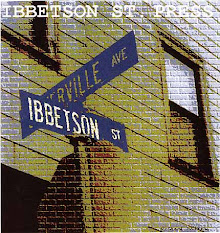The Red Letters
In ancient Rome, feast days were indicated on the calendar by red letters.
To my mind, all poetry and art serves as a reminder that every day we wake together beneath the sun is a red-letter day.
––Steven Ratiner
Red Letter Poem #259
The Nature Of
Generosity
The day my last aunt, Lala, died
I visited, just by God’s chance.
She was sitting on the couch,
corpse-thin, smiling.
“Susie dear!” And, as they all did, always,
she reached her arms out to hold me.
Fear
Walking along the tar-stuck lane,
past a crowd of roses,
grandparents on the screened porch.
Nineteen years old. Each rose
accusing: you don’t love him.
Dry-mouthed. Alone.
Heroism
My cousin Stephen held one sister up
from beneath the cracked ice,
as another clunked off on skates for help.
Held, held, so she could clutch at
and keep her life. Then he sank.
That apple of his father’s eye.
––Susan Donnelly
“So clearly will truths kindle light for truths”––this, from Lucretius, Roman poet and philosopher from the first century BCE, and author of De Rerum Natura (On the Nature of Things), often considered the greatest masterpiece of Latin verse. Composed in six books, some 7400 dactylic hexameters, the didactic poet lays out the principles of Epicurean thought, the nature of the mind and soul, and the world of celestial and terrestrial phenomena. In today’s Red Letter, Susan Donnelly makes her return to these electronic pages with a much more succinct portrayal of our human landscape: a mere three 6-line verses, stitched together by the tremulous needle of a heart in motion. Unlike Lucretius, her poems do not entirely dismiss the hand of the divine––but they do present clear-eyed observation of lived experience, leaving us readers to elaborate on the philosophical implications. Her subtitles––‘Generosity,’ ‘Fear,’ ‘Heroism’––remind us that, for several thousand years, humankind has considered what takes place within the all-too-brief span of a lifetime, wondering whether meaning is inherent or imposed by the ones talking about it.
What I love about Susan’s poetry is the way she crafts completely naturalistic scenes, portrayed in simple colloquial voices; but beneath that ‘simple’ surface, tumultuous dramas and cerebral surprises abound. Our own imaginations quickly become willing collaborators in the unfolding mystery. “The day my last aunt, Lala, died” sets the stage with deliberate iambic pacing and that string of open vowel sounds. But it may take a second or third read to begin sensing the gravity of those seemingly off-hand details. “My last aunt” hints at the succession of griefs that life presents––something each new generation is compelled to recognize. But it’s the simple love which family often provides (there’s that deceptive term again) that is crucial here: “And, as they all did, always,/ she reached her arms out to hold me.” Always. How easily we trusted that idea in our youth, and how bedeviled by it as the years progress.
Of course, we aging children find ourselves more than a little benighted, rarely possessing much confidence about our place in the scheme of things. Are we worthy of that unconditional affection, or must it be somehow earned? And, as in the second poem, can we even trust the heart’s assessment of its own mercurial nature? The grandparents, behind the scrim of that screened porch, exist in a world very different from this heartsick nineteen-year-old’s (where even the roses are accusatory.) But that reaching out returns in the final poem with a gesture that seems unmistakably pure, yet nearly impossible to grasp. How deftly Susan sketches the deadly drama of thin ice on a New England pond. “Held, held, so she could clutch at/ and keep her life.” (If you heard a sonic allusion here to “Rage, rage against the dying of the light”, you’re not alone.) Precious life will both triumph and succumb in a matter of fourteen words. Didn’t that matter-of fact drumbeat of three stressed syllables––“Then he sank.”–– make your own heart turn leaden? And the poet follows it with an unaffected folkism–– “That apple of his father’s eye.”––because that’s why cliché often exists: to say something when the unspeakable engulfs us, though we know words will fall short. Words do––but we do not. In the depths of the imagination, we place ourselves into this moment––as the girl clutching at her young life, and as the brother preparing to let go of his own––and wonder to what we would cling.
Susan is the author of four full-length poetry collections and six chapbooks. Her first book, Eve Names the Animals was awarded the Morse Poetry Prize from Northeastern University Press; and the title sequence in The Maureen Papers and Other Poems (from Every Other Thursday Press) shared the New England Poetry Club’s Samuel Washington Allen Award. Recently, she published The Winners: Poems for Tim, a small collection written in the time leading up to her brother’s death and its aftermath, elegiac and deeply moving. “Life is one long struggle in the dark,” writes Lucretius, and I know Susan is honest enough to acknowledge the truth of the statement. Yet she seems more committed to the possibility that honest thought and the music of well-crafted language generate their own kind of light. I, for one, am grateful.
The Red Letters
* If you would like to receive these poems every Friday in your own in-box – or would like to write in with comments or submissions – send correspondence to:
steven.arlingtonlaureate@gmail.com
* To learn more about the origins of the Red Letter Project, check out an essay I wrote for Arrowsmith Magazine:
https://www.arrowsmithpress.com/community-of-voices
and the Boston Area Small Press and Poetry Scene
http://dougholder.blogspot.com
* For updates and announcements about Red Letter projects and poetry readings, please follow me on BlueSky
@stevenratiner.bsky.social
and on Twitter
@StevenRatiner
And coming soon:
a new website to house all the Red Letter archives at StevenRatiner.com




































